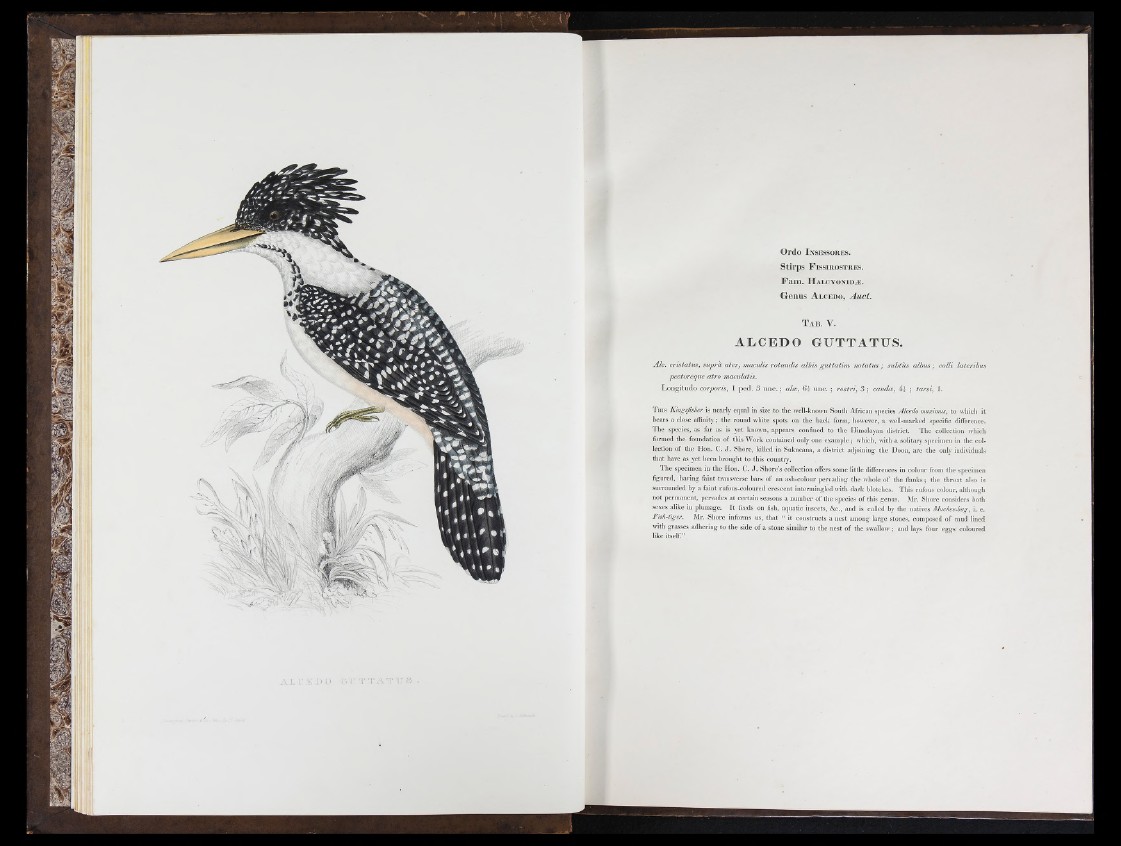
"A ■
A 1, i ' r 1 I I ' A T T ' l ' A ' ; ' [■ A
Ordo I n s e s s o k e s .
S t i r p s FiS S IllO STRE S .
Fam. I-lALCYONlDyE.
Genus A l c e u o , Au c l.
Tab V.
ALCEDO GUTTATUS .
A h . c r is ta tu s , su p ra a te r , maculis ru lum lis ulb is g u t la t im n o ta tu s ; su b tu s a lb its ; colli la te rib u s
p c c to r eq u e a tro maculatis.
L o n g itu d o corporis, 1 peel. 3 u n c .; alcc, u n c .; ro s ir i, 3 ; caudce, 4-]- ; Uu si, 1.
T h is K in g sjish e r is nearly equal in size to the well-known South African sjiecies Alc ed o m a x'm u s, to which it
bears a close affinity; tbc round white spots on the back form, however, a well-marked sjiecific dilFcrence.
The sjiecies, as far as is yet known, ujipears confnied to tlie Ilinialavan district. The collection which
formed the foundation of this Work contained only one example ; wliicIi, with a solitary sjieciinen in the collection
o f the Hon. C. J . Shore, killed in Sukiieana, a district adjoining' the Doon, are the only individuals
that have as yet been brought to this country.
The specimen in the Hon. C. J . Shore’s collection offers some little differences in colour from the specimen
figured, having faint transverse bars of an ash-colour jicrvading the whole of the flanks; tiie throat also is
surrounded by a faint rufous-coloured crescent intermingled witli dark blotciies. This rufous colour, although
not jicrmancnt, pervades at certain seasons a number o f the sjiecies o f this genus. Mr. Shore considers both
sexes alike in jilumage. It feeds on fish, aquatic insects, Nc.. and is called by the natives Mach c e-b a g , i. c.
F ish -tig e r . Mr. Shore informs us. that “ it constructs a nest among large stones, composed of mud lined
with grasses adhering to the side of a stone similar to the nest o f the swallow; and lays four eggs coloured
like itself.”